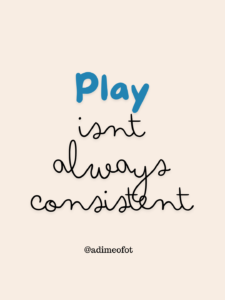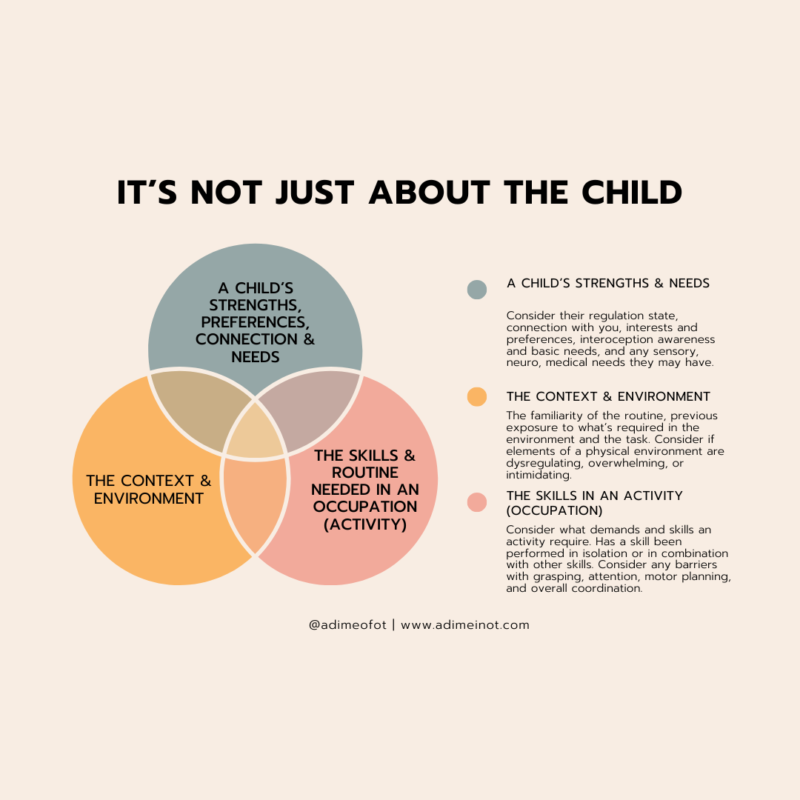Play is a critical part of childhood development, providing opportunities for social interaction, motor skill development, and emotional growth. However, for some children, certain sensory and motor challenges can make play more difficult. By understanding these challenges and implementing supportive strategies, we can create more inclusive, enjoyable, and enriching play experiences for autistic children.

Factors That Impact Play and Learning
One area that influences how autistic children engage in play is proprioception—the body’s sense of where it is in space. Proprioceptive difficulties are common with autistic children and can affect their motor planning, coordination, and overall physical awareness. These difficulties may include:
- Difficulty with Motor Planning and Postural Control: Some children may struggle with organizing their movements, making it harder for them to control their posture or body position during play. For example, they may have trouble sitting still, maintaining balance, or moving fluidly from one activity to another.
- Overreliance on Proprioception: Some children rely heavily on their sense of body position to understand how to move in space, which can make it harder to integrate visual information. For example, when trying to reach for an object, they might have trouble coordinating what they see with how they move their body. This can lead to behaviors like toe-walking, bumping into objects or people, or difficulty with tasks that require fine motor skills like grasping or pointing.
- Spatial Awareness Challenges: Children with autism may also struggle with organizing and perceiving the space around them. This can result in difficulties anticipating movement or planning their next steps. It might show up as clumsiness, frequent falls, or running into things without clear intention.
- Difficulties with Motor Anticipation: Anticipating the next step in an activity—whether it’s reaching for a ball or jumping to catch it—can be challenging for some autistic children. These motor difficulties can result in falls, crashes, or even a reluctance to participate in certain activities for fear of injury.
Why These Challenges Matter for Play
When motor control and proprioceptive difficulties arise, they can impact a child’s ability to fully engage in play. Physical coordination plays a significant role in activities like running, jumping, and playing games with others. If a child experiences frequent falls, struggles with spatial awareness, or lacks coordination, they may feel frustrated, overwhelmed, or left out of group activities. This can lead to a cycle where the child is less motivated to participate, which in turn impacts their overall social and emotional development.
For example, children who struggle with motor planning may be unable to participate in structured games that require teamwork, like playing catch or tag. They may also avoid certain activities that feel too challenging, or they might have difficulty joining in with peers during free play.

The Importance of Supporting Motor Skills and Independence
It’s crucial for caregivers and educators to recognize these challenges and adapt play and learning experiences to meet the child’s unique needs. By focusing on developing motor skills and supporting sensory integration, we can help children build their confidence and increase their participation in play.
Some effective strategies for supporting motor development include:
- Sensory Integration Techniques: These approaches help children become more aware of their bodies and how they move in space. Occupational therapists may use specific strategies or tools to help children improve coordination and proprioceptive awareness.
- Adaptive Equipment: Specialized tools or toys designed to support motor development can make a huge difference. For example, using larger balls for catching, or cushioned mats for safer play, can help children feel more confident and successful during physical activities.
- Structured Play Activities: Providing clear, step-by-step instructions for games or tasks can help autistic children understand expectations and feel more comfortable participating. Using visual supports, such as picture schedules or visual cues, can also aid in communication and understanding.
Promoting Independence and Self-Determination
An important part of supporting autistic children in their play and learning is helping them build independence. Instead of directing every movement or activity, we can empower children to make their own choices and develop their skills at their own pace. This promotes self-determination and helps children feel more in control of their bodies and their environment.
Therapists and caregivers should focus on fostering an environment where children can explore, experiment, and learn through trial and error. For example, instead of physically guiding a child through a movement, therapists might use verbal or visual prompts to encourage the child to try on their own. This helps build confidence and encourages autonomy in play and learning activities.
Moving Forward: Supporting Growth and Enjoyment
If you’re a parent, caregiver, or teacher of an autistic child, remember that progress in play and learning doesn’t happen all at once. Every small step forward is an accomplishment. By recognizing and supporting each child’s unique needs, we help ensure that they not only develop at the pace that works for them but also experience the joy and benefits of meaningful play.